Is There a "Right Way" to Write a Resume?
As a transitioning military professional, you may find yourself wondering if there is a “right way” to write a resume for the civilian job market. While the answer isn’t straightforward, certain essential elements can help you craft an effective resume that captures the attention of potential employers.
The Basics of a Good Resume
Every resume should include fundamental building blocks that tell your professional story:
- Contact Information: Make sure your contact details are current and professional. Include your LinkedIn profile and a professional email address.
- Professional Summary: This is a brief snapshot of who you are. Highlight your military experience, key skills, and what makes you unique. Think of it as your elevator pitch on paper.
- Work Experience: Detail your military roles, focusing on your responsibilities and, more importantly, your accomplishments. Translate military jargon into civilian terms to ensure clarity.
- Education: List your degrees, relevant coursework, and any certifications you hold.
- Skills: Showcase skills that are relevant to the job you’re applying for. Use keywords from the job description to help pass through Applicant Tracking Systems (ATS).
Tailoring Your Resume
One of the most crucial aspects of resume writing is customization. There’s no such thing as a one-size-fits-all resume. Tailor each resume to the specific job you’re applying for by using keywords from the job description, emphasizing relevant experience, and aligning your skills with what the employer is seeking.
Design and Format
While content is king, design and format are the queen. Both need to work together to create an impressive resume:
- Use a clean, professional font.
- Ensure adequate spacing and consistent formatting.
- Avoid excessive design elements, but a touch of creativity can help your resume stand out, especially in creative fields.
Types of Resumes
There are different types of resumes to consider based on your work history and the job you’re applying for:
- Chronological Resume: Lists your work experience in reverse chronological order. Ideal for those with a strong, consistent work history.
- Functional Resume: Focuses on skills and experiences rather than a chronological work history. Suitable for career changers or those with gaps in employment.
- Combination Resume: Blends elements of both chronological and functional resumes, perfect for showcasing a diverse range of skills and experiences.
Common Myths About Resumes
Let’s debunk some common misconceptions:
- Length: Your resume doesn’t have to be limited to one page. It should be as long as necessary to effectively communicate your qualifications.
- Design: While excessive design can be distracting, a well-designed resume can make a strong impression, especially in fields like marketing or design.
The Importance of Personal Branding
Your resume is more than just a list of jobs and skills; it’s a marketing tool for your personal brand. Showcase your unique value by focusing on achievements over duties. Employers want to know what you accomplished, not just what you were responsible for. Make your professional summary compelling, highlighting your strengths and career goals.
Conclusion
So, is there a “right way” to write a resume? The answer is both yes and no. While there are essential elements and best practices everyone should follow, the “right way” ultimately depends on the individual, the industry, and the specific job. The key is to create a resume that effectively communicates your qualifications, skills, and experience in a way that resonates with the employer.
In the end, the best resume is one that tells your professional story clearly and convincingly. By following these guidelines and avoiding common pitfalls, you can craft a resume that stands out and helps you land your dream job.
Transitioning from the military to a civilian career is a significant step, but with a well-crafted resume, you can make a smooth and successful transition. Good luck!
Download a resume template here: Resume Template
